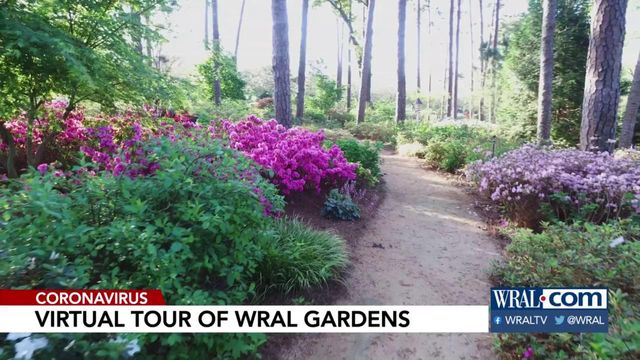Beauty and kindness: Hidden history of WRAL's Azalea Gardens
The blooming of the WRAL Azalea Garden has been a constant symbol of the return of spring.
Posted — UpdatedThrough out the decades, the blooming of the WRAL Azalea Garden has been a constant symbol of the return of spring. Bursting with southern flowers – dogwoods, magnolia, hydrangeas and, of course, azaleas – it's a sanctuary of life in the middle of a busy city.
Marriages have begun there. Memorials to lost loved ones have been left there.
A tribute to beauty for beauty's sake
Born in 1887 in Ashe County, A.J. Fletcher, the founder of Capitol Broadcasting and WRAL-TV, was the son of a Baptist minister. He worked simple jobs, like running the stables, delivering groceries and attending a fruit stand.
In 1937, he established Capitol Broadcasting along with four other partners. As the success of his radio and television ventures began to grow, Fletcher always looked for ways to give back to Raleigh.
In 1959, three years after WRAL went on the air, the iconic azalea gardens opened to the public. “It was simply my way of paying tribute to beauty for beauty’s sake,” said Fletcher, who had a genuine passion for azaleas, taking great joy in finding new varieties to display for the community.
He oversaw the planting of 1,000 azaleas.
When asked why he went to such lengths to create the gardens, Fletcher said, "I did it because I knew it would be beautiful. It was simply my way of paying a tribute to beauty for beauty’s sake."
More tributes to beauty and kindness
Fletcher's passion for beauty extended beyond the gardens. Just a few years later in 1961, he established the A.J. Fletcher Foundation, which still exists today, providing grant money to hundreds of non-profit endeavors.
These grants "helped ensure the strength of North Carolina's non-profit sector," said the Philanthropy Journal. They helped pay staff salaries, assisted with resource development and technical assistance.
Over the decades, as the azaleas grew as a "senseless act of beauty," just around the corner the foundation provided "random acts of kindness," and the local non-profit sector blossomed and grew right alongside the Fletcher's azalea garden.
Related Topics
• Credits
Copyright 2024 by Capitol Broadcasting Company. All rights reserved. This material may not be published, broadcast, rewritten or redistributed.






